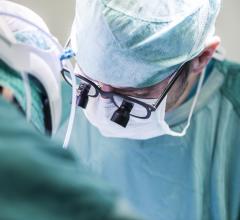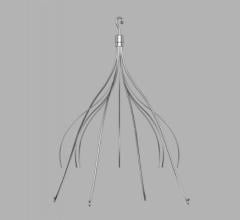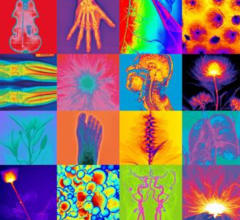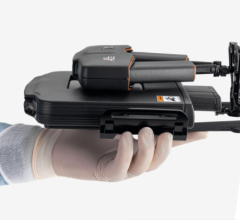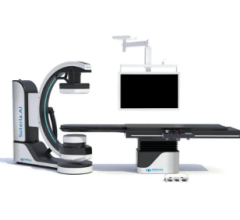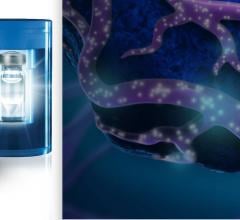March 10, 2009 - Endovascular or endograft repair, a minimally invasive interventional radiology treatment that uses stent grafts to treat abdominal aortic aneurysms (AAA), has low re-intervention rates that are comparable to those reported for open surgical repair - and can be recommended as first-line treatment, according to a study released at the Society of Interventional Radiology’s 34th Annual Scientific Meeting.
Currently this less invasive treatment has been reserved for elderly patients or those with co-morbid conditions who were considered too sick for major surgery. Stent grafts (tubes composed of fabric supported by metal mesh) were introduced about a decade ago. Because the devices were new, long-term durability was unknown, and there was initially a higher rate of secondary interventions compared to open surgery, it was recommended that patients with endografts be monitored yearly with imaging, subjecting them to annual radiation.
“Our data show that the interventional radiology treatment can be chosen with confidence. This is good news for patients, many of whom do not want major abdominal surgery,” said Tarun Sabharwal, M.D., interventional radiologist at Guy’s and St. Thomas’ Hospitals in London, England. Additionally, the researchers advocated revising current surveillance of patients' stent grafts by CT scans to check for delayed appearance of complications, especially in light of the added radiation risk the scans bring to patients.
AAA, called the “silent killer” because there are usually no obvious symptoms of the disease, is caused by a weakened area in the aorta, the main vessel that supplies blood from the heart to the rest of the body. When blood flows through the aorta, the pressure of the blood beats against the weakened wall, which then bulges, balloon-like, into an aneurysm. If the aneurysm grows large enough, there is a danger that it will burst. The goal is to prevent aneurysms from rupturing. Once an AAA has ruptured, the chances of survival are low, with 80 to 90 percent of all ruptured aneurysms resulting in death. These deaths can be avoided if an aneurysm is detected and treated before it ruptures. AAA is the 17th leading cause of death in the United States, accounting for more than 15,000 deaths annually. AAA affects as many as 8 percent of people over the age of 60, and men are four times more likely to have AAA than women.
To treat AAA, interventional radiologists use imaging to guide a catheter and graft inside a patient's artery - without the need to cut open the abdomen, as in surgery. Going through skin at the groin, a catheter is passed into the femoral artery and directed to the aortic aneurysm. The doctor passes a stent graft, which is compressed into a small diameter within the catheter, through the catheter. The stent graft is advanced to the aneurysm and then opened, creating new walls in the blood vessel through which blood flows. This innovative and noninvasive method of placing a graft within an aneurysm redirects blood flow and stops direct pressure from being exerted on the weak aortic wall, explained Sabharwal.
Interventional radiologists analyzed the results of 453 patients (ages 40-93) who underwent endovascular repair for AAA over an eight-year period, studying the rate of secondary interventions (or the necessity of performing additional procedures to correct complications from a prior treatment) and whether the need for repeat interventions could be predicted by surveillance imaging. "Most importantly, the overall rate of secondary interventions after endovascular repair was 7.2 percent, which compares favorably to open surgery series," said Sabharwal. Complications include possible movement of the graft after treatment or persistent blood flow into the aneurysm, which resumes the risk of its growth or rupture. Also, the graft must be monitored to ensure its continued function, and endoleaks may occur, causing blood to flow outside the endovascular graft. Researchers noted that 13 patients (2.8 percent) needed to be treated for this latter complication. The overall 30-day mortality rate for endovascular aneurysm repair was 3.3 percent, compared to open surgery, which has a high associated mortality rate (ranging from 2-10.6 percent). Additionally, researchers found that most complications were detected within the first three months after repair, and that it was "rare" for CT scans to detect complications after that period of time. "This suggests that CT surveillance protocols are not justified; if a three-month surveillance scan doesn't demonstrate any abnormalities, then patients could be followed with routine ultrasound scanning to monitor for complications," he added. In total, secondary interventions were performed in 33 patients (7.2 percent), of which six (1.3 percent) were CT scan surveillance detected.
"It is remarkable in my eyes that the 'silent killer,' abdominal aortic aneurysm, can be treated successfully by a minimally invasive procedure that eliminates the need to undergo a large abdominal incision from surgery or to clamp the aorta, the main artery from the heart, which can create significant stress to the heart," added Sabharwal. “We have disproved myths about the durability and effectiveness of minimally invasive endovascular aneurysm repair. Our results, following patients over the past eight years, contradict reports of high rates of secondary interventions coupled with the need for prolonged CT scan surveillance,” he said. “Endovascular repair reduces the risk of surgery, the amount of pain and the number of complications, getting patients back to normal health more quickly than surgery. Its recovery time is measured in days to weeks, as opposed to surgery patients who take several weeks to months to recover,” added Sabharwal, who indicated that endograft patients are often discharged the day after treatment, resuming normal activities within two weeks (compared to six to eight weeks after surgery).
Abstract 211: "Secondary Intervention Rates Following Endoluminal Infrarenal Aortic Aneurysm Repair," K. Katsanos, F. Ahmad, R. Salter, C. Sandhu, S. Thomas, J. Reidy and T. Sabharwal, Guy's and St. Thomas' Hospitals, interventional radiology, London, United Kingdom; S. Black and H. Zayed, P.R. Taylor, Guy's and St. Thomas' Hospitals, vascular surgery, London, United Kingdom, SIR 34th Annual Scientific Meeting March 7-12, 2009.
For more information: www.SIRmeeting.org


 January 29, 2025
January 29, 2025 
